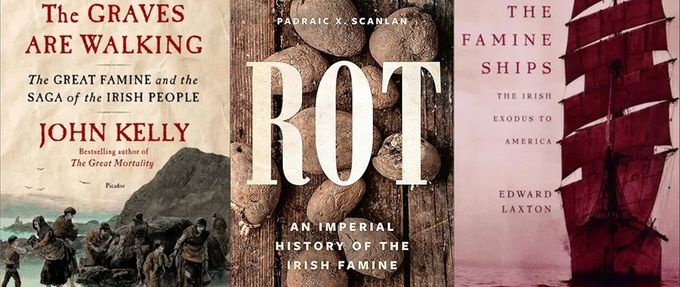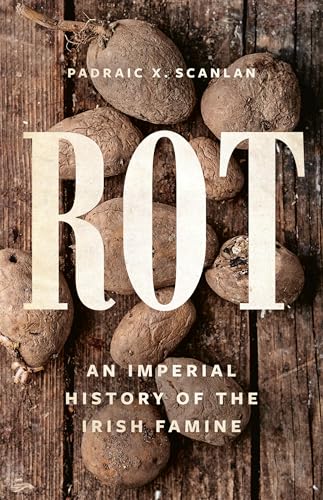The humble potato was introduced to Europe in the second half of the 16th century, brought by Spanish explorers and conquistadors from what is now present-day Peru and Bolivia. By the middle part of the 19th century, potatoes were a staple crop throughout Europe, central to the food supply of countless people who, a few hundred years before, had never so much as seen a potato.
In the 1840s, these crops were struck by what was simply known as the blight—a type of water mold that we know today by its scientific name, Phytophthora infestans. This blight led to more than 100,000 deaths outside of Ireland, and was an important catalyst in the so-called “springtime of nations” that would sweep across Europe in 1848 and 1849.
No other country was hit as hard by the potato famine as Ireland, however, where the dark years between 1845 and 1852 were known variously as the Great Famine, the Great Hunger, or “Drochshaol” in Gaelic, which translates to “the bad life.”
Over the course of these hard years, the population of Ireland was cut in half. More than a million people died from starvation and disease during the Great Hunger, while millions of others fled the country, marking one of the largest exoduses in history.
While the proximate cause of the famine was the potato blight, Ireland was particularly affected due to a variety of external variables, including an absentee landlord system, single-crop dependence, religious dogma, anti-relief sentiment, and political relations between Ireland and London, with Ireland having been... inducted into the United Kingdom just a few decades before.
For those who survived and those who fled, the Great Hunger would enter into folk memory and leave its mark for generations to come. Now, these five books will help you to understand the conditions surrounding the Great Famine, the indelible wounds that it left behind, and the ways in which this historical moment helped to shape the history of Ireland, the United Kingdom, and America.
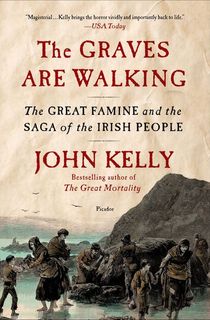
The Graves Are Walking
“Though the story of the potato famine has been told before, it’s never been as thoroughly reported or as hauntingly told,” raves the New York Post of this book about not only the conditions which led to one of the greatest humanitarian disasters of the 19th century but also its impact on the individual lives of those who experienced it.
The story of the Great Famine is a tale of greed, cruelty, political violence, and tragedy, but it is also a story of triumph for those who survived and made new lives for themselves against terrible odds. All this and more is captured through “meticulous research and muscular writing” in this book that is “terrifying, edifying and empathetic” (USA Today).
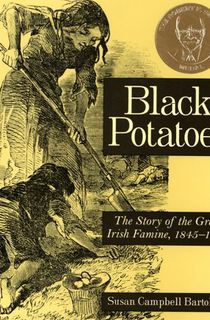
Black Potatoes
Winner of the second annual Sibert Award, presented by the Association for Library Service for most distinguished informational book published in English, Susan Campbell Bartoletti’s “fascinating account of a terrible time” (Kirkus Reviews) brings the Great Famine to life by showing its effect on the lives of everyday people. While the famine may have been caused and exacerbated by global and political forces, the people it impacted most were the everyday inhabitants of Ireland, who died of starvation and disease, or struggled against impossible odds to survive. In this award-winning book, “Bartoletti humanizes the big events by bringing the reader up close to the lives of ordinary people” (Booklist).
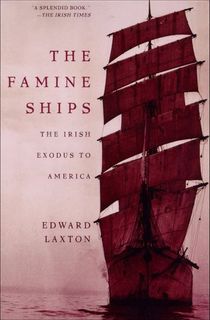
The Famine Ships
While more than a million people starved and died in Ireland between 1845 and 1852, millions more fled the country aboard packet ships, steamboats, and barques. More than a million of them came to America, among them the father of Henry Ford, and the great-grandfather of John F. Kennedy. Aboard overcrowded ships where they faced intolerable conditions, these refugees fled the famine of their homeland to seek new lives for themselves and their families abroad.
In this “splendid book, written in a fresh and accessible way” (Irish Times), Edward Laxton combines years of research and interviews with the descendants of refugees with a variety of portraits, photographs, and even facsimile passenger lists to create “a fascinating compilation derived from family histories handed down through the generations” (Library Journal).
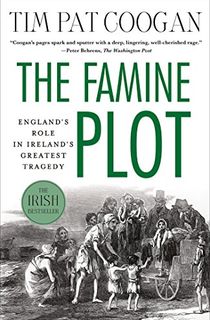
The Famine Plot: England's Role in Ireland's Greatest Tragedy
Tim Pat Coogan has been called “Ireland’s best-known historical writer,” and The Boston Globe hailed The Famine Plot as his “greatest achievement.” While many books focus on the effects of the Great Famine, “Coogan makes no bones about accusing the government of the day of ‘a genocidal intent’” (BBC History Magazine) in this book that goes straight for the throat of the political and social causes which exacerbated the tragedy, making “a compelling case for why we should revisit our current understanding” of the Great Famine (The Economist).
This book is filled with “disturbingly graphic images and compelling language” (Irish Edition) that directly addresses how the actions (and inaction) of the UK government worsened the famine and led to more than a million deaths, in a work that “spark[s] and sputter[s] with a deep, lingering, well-cherished rage” (The Washington Post).

Rot: An Imperial History of the Irish Famine
At the heart of the devastation wreaked by the Great Famine was an overreliance on the potato as a single crop. However, in this “vigorous and engaging new study of the Irish Famine” (New Yorker), Padraic X. Scanlan makes the argument that even this reliance on potatoes was a reaction to British colonialism.
The result is a “disturbing and insightful account of the Irish famine” (Financial Times) that is “undoubtedly a history title of the year” (Wall Street Journal). Described as “narrative history at its best” (Air Mail), Rot looks at the political, social, and material conditions that made Ireland uniquely vulnerable to the effects of the potato famine, and shows how many of these same conditions are once more on the ascent around the globe today, in “a vivid, colorful narrative that does full justice to the Famine’s human horror” (Irish Independent).
